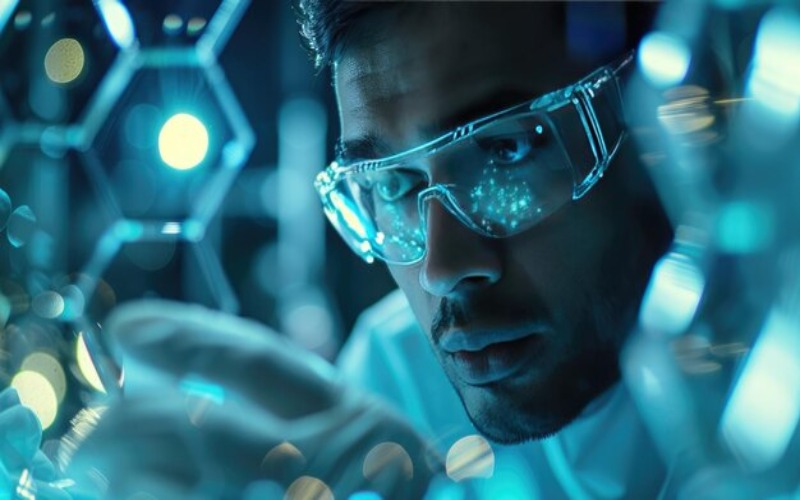Scientific discovery has always depended on the tools available to researchers. With the advancement of technology, the range and capability of high-tech instruments have dramatically expanded, enabling scientists to delve deeper into the intricacies of the natural world. These advancements are not just incremental improvements but have revolutionized how research is conducted, driving precision, efficiency, and innovation across various scientific fields.
Revolutionizing Research: The Impact of Cutting-Edge Analytical Tools
High-tech instruments have transformed research by providing capabilities that were previously unimaginable. Analytical tools such as mass spectrometers, electron microscopes, and chromatography systems have enabled researchers to identify, quantify, and visualize substances at the molecular level with unprecedented detail. These tools allow for the investigation of complex biological processes, the identification of novel materials, and the understanding of intricate chemical reactions.
Moreover, the integration of these instruments into research protocols has enhanced the reproducibility of experiments. This reliability is crucial in scientific research, where consistent results are necessary for building upon previous findings. High-tech instruments have also opened new avenues for interdisciplinary research, where fields such as biology, chemistry, and physics converge, leading to breakthroughs that would have been impossible with traditional methods.
Precision and Accuracy: How Advanced Instruments are Redefining Science
The precision and accuracy offered by advanced instruments have set new standards in scientific research. Instruments like high-performance liquid chromatography (HPLC) and nuclear magnetic resonance (NMR) spectrometers provide precise measurements that are critical in fields ranging from pharmacology to environmental science. These tools enable scientists to detect minute changes in chemical compositions, ensuring the accuracy of their findings.
The importance of precision extends beyond the laboratory. In clinical settings, accurate measurements can mean the difference between a correct diagnosis and a misdiagnosis. Advanced instruments contribute to the reliability of medical tests, ensuring that patients receive appropriate treatment based on accurate data. Similarly, in environmental monitoring, precision instruments are essential for tracking pollutant levels and assessing the impact of human activities on ecosystems.
Bridging the Gap Between Theory and Practice: The Role of High-Tech Equipment in Laboratories
High-tech equipment plays a critical role in transforming theoretical concepts into practical applications. In laboratories, sophisticated instruments are used to test hypotheses, validate models, and develop new technologies. For instance, particle accelerators have enabled physicists to explore the fundamental properties of matter, providing experimental evidence for theoretical predictions.
In the field of chemistry, advanced spectrometers, and chromatographs are used to synthesize and analyze new compounds. These instruments allow chemists to verify the structure of molecules and understand their properties, leading to the development of new materials and pharmaceuticals. By providing empirical data, high-tech equipment bridges the gap between theoretical research and real-world applications, accelerating the pace of innovation.
From Microscopy to Spectroscopy: Exploring the Spectrum of Modern Scientific Instruments
The spectrum of modern scientific instruments is broad, encompassing a wide range of technologies that enable scientists to explore the physical and chemical properties of matter at various scales. Microscopy and spectroscopy are two key techniques that have seen significant advancements, providing researchers with powerful tools for their investigations.
Microscopy has evolved far beyond the simple optical microscopes of the past. Today, electron microscopes offer resolutions at the atomic level, allowing scientists to observe the structure of materials with incredible detail. This capability is essential in fields such as materials science and nanotechnology, where understanding the arrangement of atoms can lead to the development of new materials with unique properties.
Spectroscopy, on the other hand, allows for the analysis of the interaction between matter and electromagnetic radiation. One of the most trusted instruments in this domain is the Raman spectrometer. Used across various industries, these instruments provide insights into the molecular composition of substances without damaging the samples. Trusted Raman instruments have become indispensable in both research and industrial applications, from identifying chemical compounds to monitoring the quality of pharmaceutical products.
The integration of these techniques into research practices has enhanced the ability of scientists to characterize materials and investigate chemical reactions in real-time. This combination of microscopy and spectroscopy is powerful, providing a comprehensive understanding of the materials and processes under study.
Enhancing Efficiency: The Role of Automation in High-Tech Scientific Tools
Automation has significantly increased the efficiency of scientific research. Modern high-tech instruments often incorporate automated features that reduce the time and labor required for experiments. Automated sample preparation, data collection, and analysis streamline research processes, allowing scientists to focus on interpretation and discovery rather than manual tasks.
In laboratories, automation systems can handle large volumes of samples, performing repetitive tasks with high precision and consistency. This not only speeds up research but also reduces the potential for human error. Automation is particularly valuable in fields like genomics and drug discovery, where high-throughput screening is essential for identifying potential targets and compounds.
Moreover, the integration of artificial intelligence (AI) with automation has opened new possibilities for research. AI algorithms can analyze complex datasets generated by automated instruments, uncovering patterns and insights that might be missed by human researchers. This synergy between automation and AI is driving a new era of discovery, where high-tech instruments play a central role in unlocking the mysteries of science.
Data-Driven Discoveries: The Importance of Advanced Instruments in Big Data Science
In the age of big data, the role of advanced instruments in data collection and analysis cannot be overstated. High-tech instruments generate vast amounts of data, from genomic sequences to climate models, which are essential for advancing scientific knowledge. The ability to collect and analyze this data in real time has transformed research in fields such as medicine, environmental science, and physics.
Advanced instruments are equipped with sensors and data processing capabilities that allow for continuous monitoring and analysis. For instance, in astronomy, telescopes equipped with high-resolution sensors capture detailed images of the universe, generating data that astronomers use to study celestial objects and phenomena. Similarly, in environmental science, sensors monitor atmospheric conditions, providing data for climate models and predictions.
The integration of big data analytics with high-tech instruments is enabling scientists to make data-driven discoveries at an unprecedented scale. As data continues to grow in volume and complexity, the importance of advanced instruments in collecting and analyzing this information will only increase, driving future innovations in scientific research.











